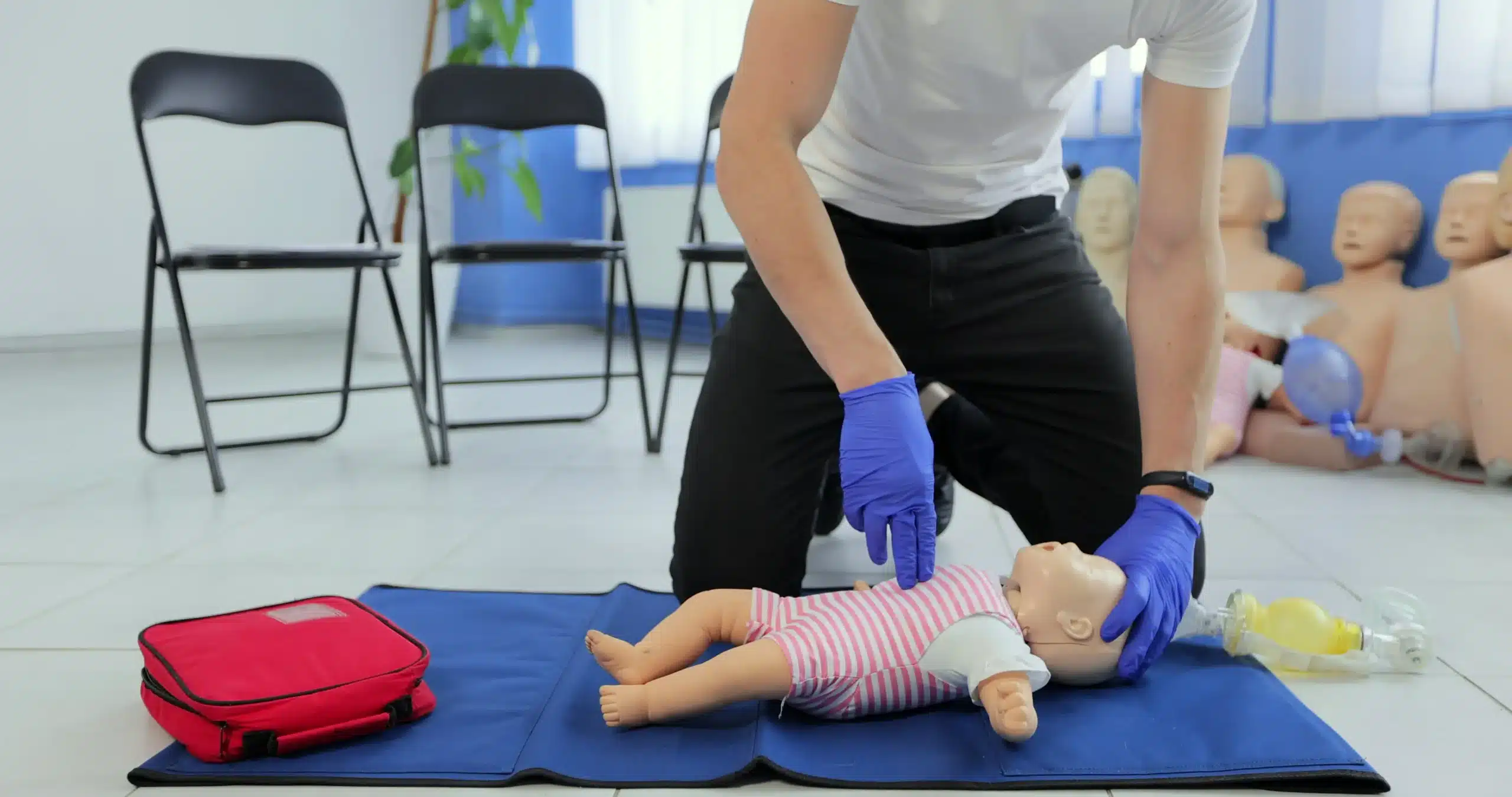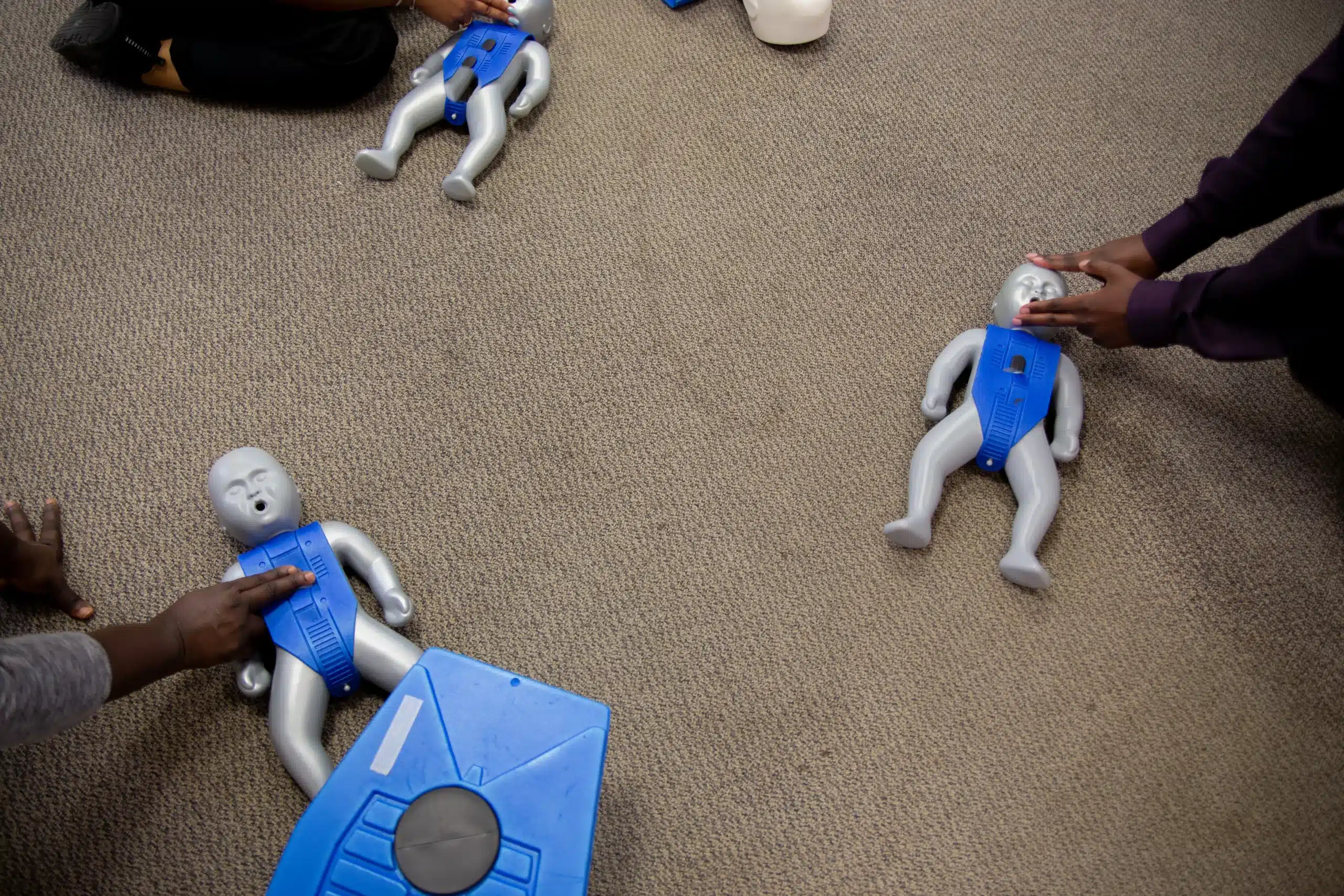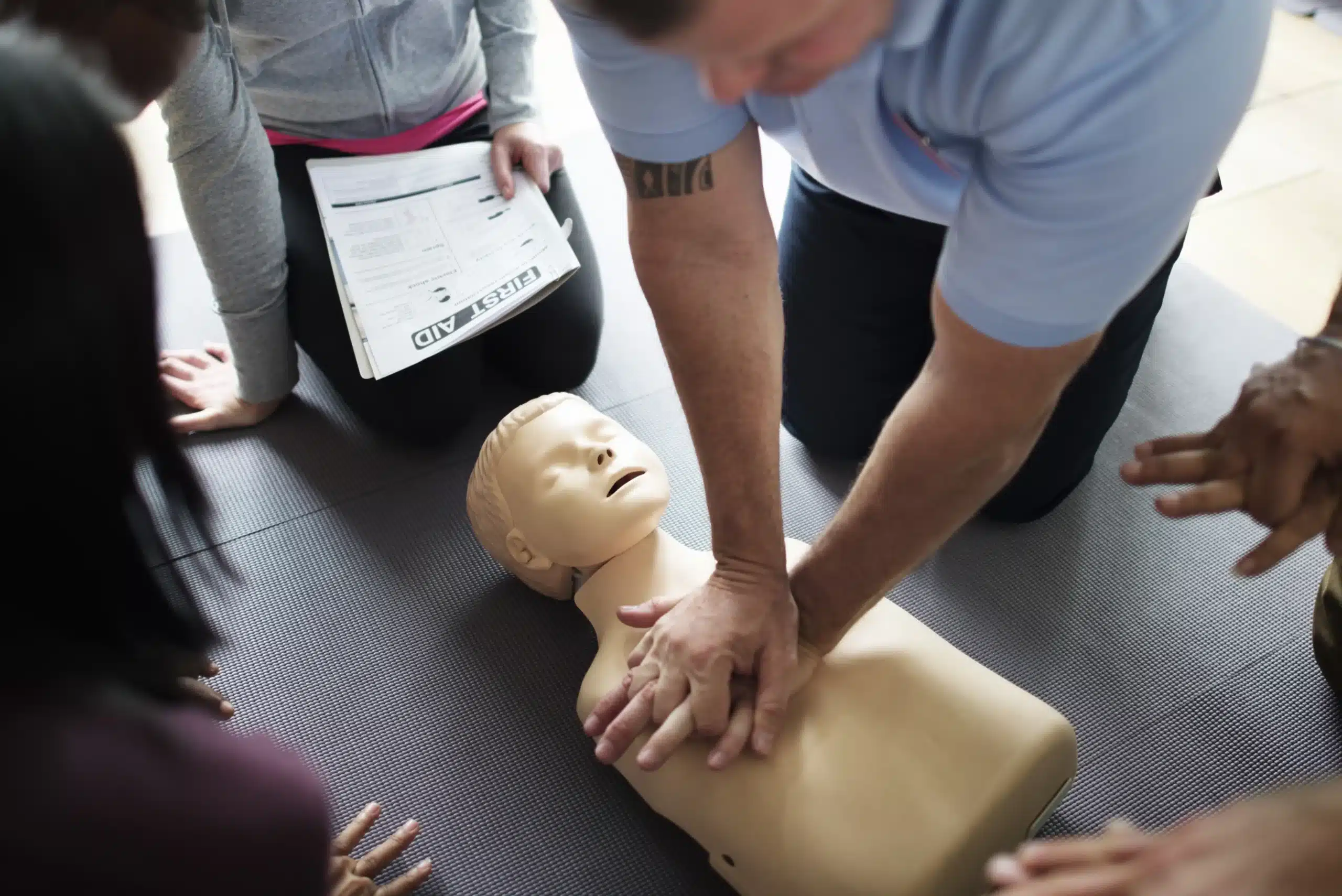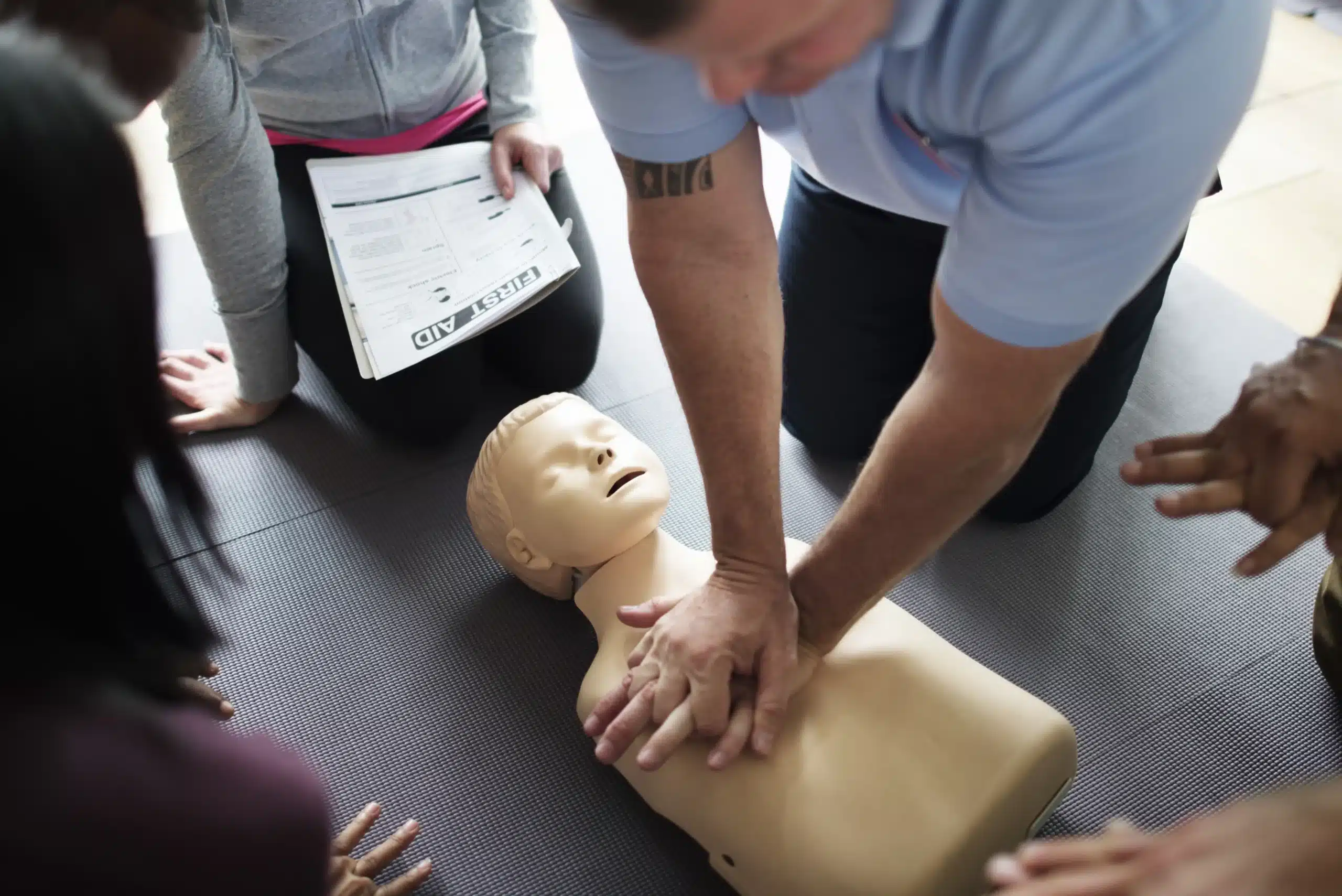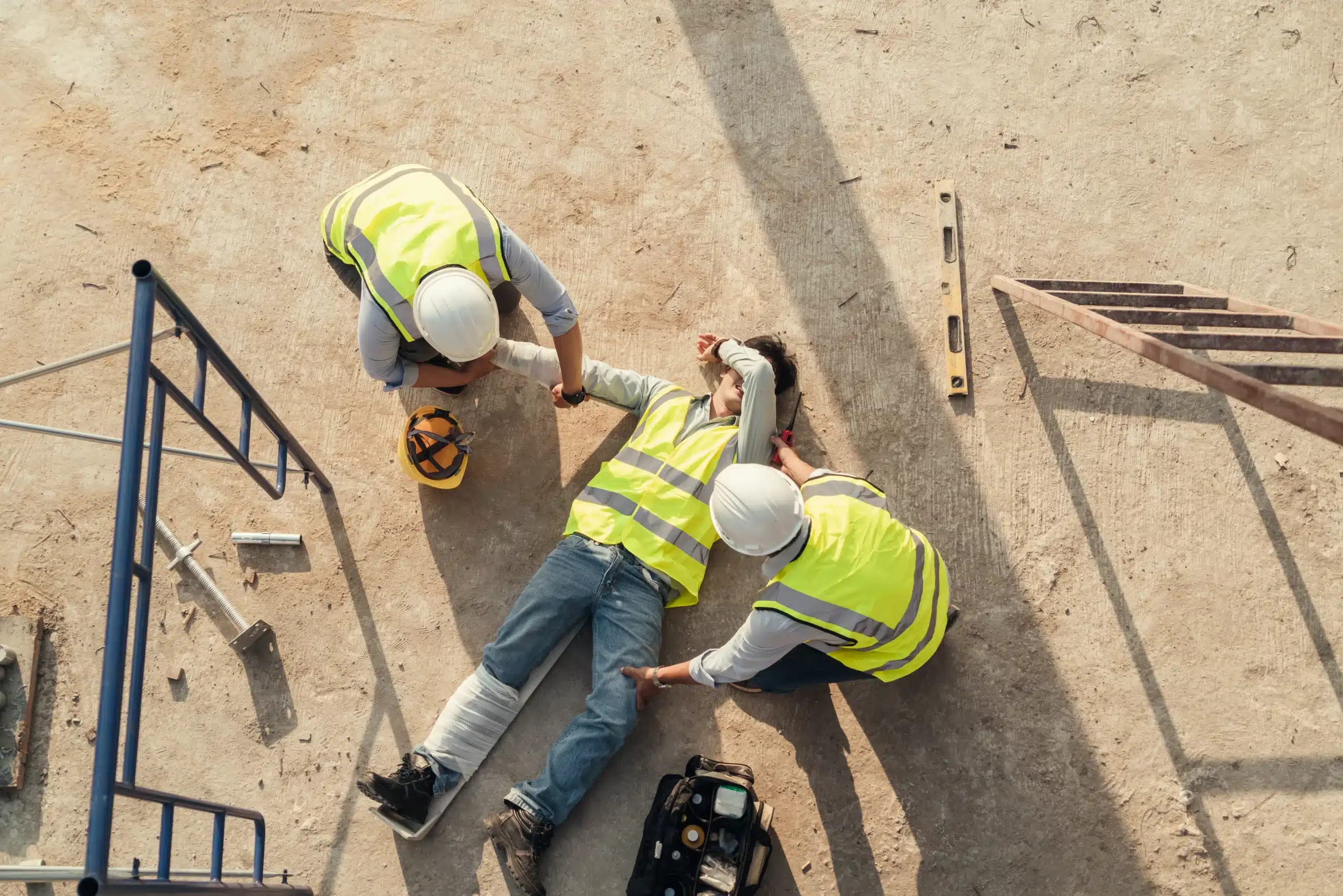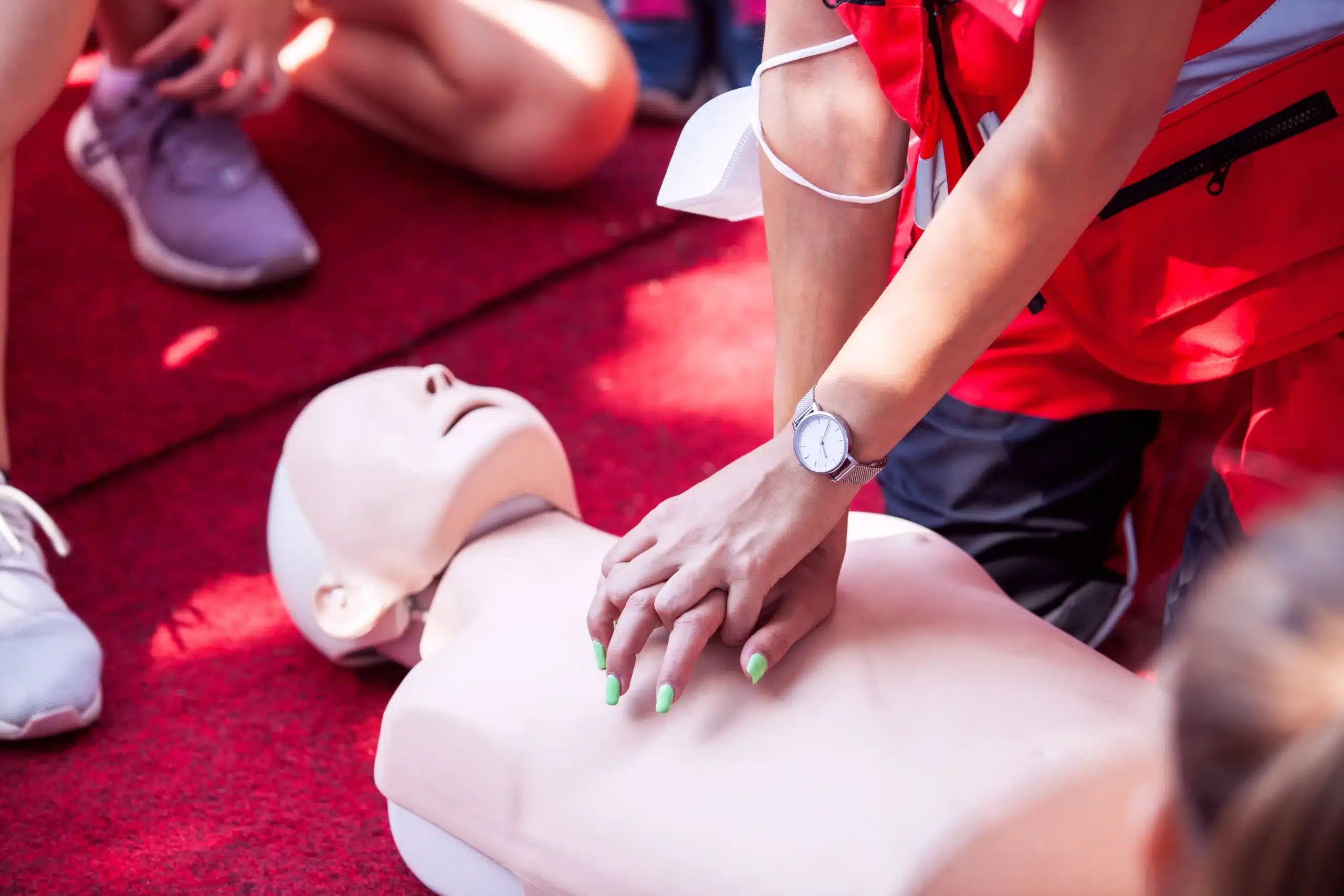Accidents happen. Illnesses strike. It’s a fact of life. But what if you could be the person who steps in, confidently and calmly, to provide immediate care during a medical emergency? That’s the power of first-aid training. This guide is your resource for everything related to first-aid in Palo Alto. We’ll cover the essential skills you’ll learn in a first-aid course, discuss the various training providers in the area, and offer practical advice on choosing the right course for your needs. We’ll also explore the importance of ongoing practice and continuing education to maintain your skills and stay up-to-date with the latest techniques. Empower yourself to make a difference—become a trained first responder.
Key Takeaways
- First-aid training equips you with essential life-saving skills: Learn how to respond effectively to various medical emergencies, from minor cuts to more serious situations, providing immediate care until help arrives.
- Find the right course for your needs: Consider factors like course content, certification, cost, and schedule to choose a program that aligns with your personal and professional goals.
- Stay prepared and confident: Regularly practice your skills and seek continuing education opportunities to maintain your knowledge and enhance your ability to respond effectively in emergencies.
What is First-Aid Training?
What is First Aid?
First aid is the immediate assistance given to someone experiencing a sudden illness or injury. It encompasses a wide range of responses, from addressing minor cuts and burns to handling more critical situations like choking or cardiac arrest. Learning even basic first aid empowers you to take action in emergencies, providing essential care until professional help arrives. These skills can significantly impact the outcome of an emergency.
Available First-Aid Courses
Various organizations and training centers offer a range of first-aid courses designed to meet diverse needs and schedules. Redwood City CPR Classes, for instance, offers comprehensive first-aid training along with CPR certification. You’ll find courses covering everything from the fundamentals of first aid and CPR to more specialized certifications like Basic Life Support (BLS). Many providers offer flexible scheduling options, including evening and weekend classes, to accommodate busy lifestyles. It’s always a good idea to check with local providers directly to see what courses they have available and when.
Why First-Aid Skills Matter
First-aid training is invaluable for everyone. Knowing how to respond effectively during a medical emergency can be truly life-saving. Whether it’s a minor injury at home, an accident at work, or a medical crisis in a public setting, having first-aid skills allows you to step in immediately, potentially reducing harm and increasing the chances of a positive outcome. In a vibrant community like Palo Alto, these skills are especially relevant. Consider first-aid and CPR training an investment in yourself, your loved ones, and your community.
Top Palo Alto First-Aid Training Providers
Finding the right first-aid training can feel overwhelming, but several excellent providers serve the Palo Alto area. Whether you’re looking for basic first aid or more advanced training, this list offers a starting point. I’ve included key details about each provider to help you make an informed decision.
Redwood City CPR Classes
Redwood City CPR Classes offers comprehensive, AHA-certified courses in CPR and first aid. They focus on giving you the skills to handle various emergencies. Their convenient location serves Palo Alto, Redwood City, and Menlo Park. Check out their guide to CPR and First Aid Training in Palo Alto.
Safety Training Seminars
Safety Training Seminars provides a range of American Heart Association certifications, including BLS, ACLS, PALS, and CPR/First Aid. They also offer specialized courses like NRP and EMSA. A major plus is their flexible scheduling, with daily classes and on-site training options for groups.
Bay Area CPR
Bay Area CPR offers accessible and straightforward CPR and first-aid training in Redwood City. Their emphasis on hands-on learning, using mannequins and AED devices, helps you gain practical experience.
Oshman Family JCC
The Oshman Family JCC (OFJCC) in Palo Alto provides a blended learning Adult and Pediatric First Aid/CPR/AED course. This course covers essential life-saving techniques for adults, children, and infants, making it a great option for parents, caregivers, and anyone who wants to be prepared.
American Red Cross
The American Red Cross is a well-known provider of first aid and CPR training. They offer a variety of courses designed to give you the skills to respond effectively to medical emergencies.
Choose the Right First-Aid Course
Finding the right first-aid course involves understanding your specific needs and what each course offers. Think about why you want first-aid training and how you anticipate using these skills. Are you a parent, a teacher, a medical professional, or someone who simply wants to be prepared for emergencies? Your individual circumstances will guide your decision.
Assess Your Needs
First-aid skills are essential for everyone. Learning basic first aid and CPR empowers you to respond effectively to emergencies, providing immediate care until professional help arrives. Consider your personal and professional life—do you work with children, the elderly, or in a high-risk environment? This will help determine the level of training you need. For additional context, explore resources like this guide on first-aid training in Redwood City.
Course Length and Certification
First-aid courses vary in length and the type of certification they offer. Some courses combine CPR and first-aid training, offering a comprehensive approach to emergency response. Online options, such as those available through Palo Alto CPR Classes, can take about two hours to complete, followed by a shorter in-person skills test. This blended format offers flexibility for busy schedules.
Costs & Group Discounts
The cost of first-aid training can vary, but a standard two-hour CPR and AED course typically costs around $35 per person. It’s always wise to compare pricing from different providers. Many organizations, including Redwood City CPR Classes, offer group discounts, making training more affordable when you register with friends, family, or colleagues. Consider checking for a low price guarantee to ensure you’re getting the best value.
Training Methods & Materials
Most first-aid courses in Redwood City prioritize hands-on learning. Instructors use mannequins and AED devices to provide practical experience, allowing participants to practice essential skills in a safe environment. CPR and first-aid classes in Redwood City are designed to be accessible and cater to various learning styles.
Common Questions
People often wonder about the value and relevance of first-aid training. These classes are vital, especially in busy areas like Palo Alto. Taking CPR and first-aid classes in Palo Alto equips individuals with the skills to respond confidently during medical emergencies, potentially making a life-saving difference. Don’t underestimate the importance of being prepared.
What Happens in a First-Aid Course?
Knowing what to expect can make taking a first-aid course less intimidating. Here’s a preview of what you’ll learn and how the training unfolds.
Course Content Overview
First-aid courses cover a range of essential skills, starting with the basics. You’ll learn how to assess a scene for safety and how to call for professional help. Training also includes how to recognize and respond to common medical emergencies like bleeding, burns, fractures, and choking. You’ll also learn about caring for someone having a seizure or experiencing a sudden allergic reaction. These skills empower you to provide immediate care until paramedics arrive. For additional context, explore this guide on first-aid training in Redwood City.
Hands-on Practice
First-aid courses aren’t just lectures. Instructors emphasize hands-on learning, giving you practical experience. You’ll practice techniques on mannequins, learning how to apply bandages and splints. Many courses also include training on using an AED (Automated External Defibrillator). This hands-on practice builds your confidence and prepares you to act quickly in a real emergency.
Certification Process
Most first-aid courses offer certification through a recognized organization, such as the American Heart Association. The certification process typically involves successfully completing the course and demonstrating your skills in a practical exam. You’ll receive a certification card upon completion, valid for two years. The linked page outlines the certification process, associated costs, and course content details, which can vary by provider.
Skills You’ll Gain
Completing a first-aid course equips you with practical skills to handle a variety of medical situations. You’ll learn how to control bleeding, manage burns, and stabilize injuries. You’ll also gain confidence in administering CPR and using an AED. These skills are invaluable not only in emergencies but also in everyday life, allowing you to assist others and potentially save lives. Find the right first-aid and CPR training in Palo Alto with an AHA-certified course.
Participant Feedback
Past participants often highlight the value of first-aid training. Many share stories of how their new skills helped them respond effectively to real-life emergencies. The consensus is clear: these courses provide essential knowledge and skills that can make a real difference. Learn more about the impact of these courses from others’ experiences.
Get the Most Out of First-Aid Training
Knowing first aid is like having a superpower—it gives you the ability to help in moments that truly matter. But like any superpower, it needs practice and upkeep. Here’s how to make the most of your first-aid training:
Prepare for Emergencies
First-aid training empowers you to respond effectively to emergencies. It’s about more than just bandages and CPR—it’s about having the confidence to take action when seconds count. Think of it as equipping yourself to handle anything from minor cuts and burns to more serious situations, providing immediate care until professional help arrives. Learn more about how first-aid training can prepare you for a range of emergencies.
Maintain Your Skills
Just like any skill, first aid requires regular practice. Consider refreshing your certification and knowledge periodically. This ensures you’re always ready to respond confidently and effectively. CPR and first-aid classes play a vital role in community preparedness, especially in dynamic areas like Palo Alto. Regularly reviewing and practicing these skills can truly be lifesaving.
Continuing Education
The world of first aid is constantly evolving, with new techniques and best practices emerging. Staying up-to-date through continuing education ensures you’re always equipped with the latest knowledge. This commitment to ongoing learning enhances your skills and reinforces your confidence in providing care. Explore options for CPR and first aid training to find the right course for your needs and schedule. Consider adding advanced certifications to your skillset as well.
Additional Resources
Beyond formal training, numerous resources can help you maintain and expand your first-aid knowledge. Online courses, refresher videos, and even community workshops offer convenient ways to stay sharp. These supplemental resources can provide valuable insights and practical tips to enhance your skills.
Use First Aid in Real Life
While we hope you never have to use your first-aid skills in a serious situation, being prepared can make a significant impact. Consider volunteering for community events or joining programs like the Community Emergency Response Team (CERT). These opportunities allow you to practice your skills in a controlled environment and contribute to your community’s safety net. The CERT program offers a practical way to learn how to be a resource during emergencies, including providing basic first aid and light search and rescue. You might also consider becoming a CPR/first aid instructor to solidify your knowledge and help others learn these vital skills.
Related Articles
- First Aid Training in Menlo Park: A Complete Guide – Redwood City CPR Classes
- CPR and First-Aid Training’s Crucial Role in Workplace Safety
- CPR and First Aid Training in Palo Alto: Your Complete Guide – Redwood City CPR Classes
- Pediatric CPR & First-Aid Classes in Palo Alto – Redwood City CPR Classes
- Pediatric Advanced Life Support (PALS) in Palo Alto – Redwood City CPR Classes
Frequently Asked Questions
What’s the difference between CPR and first aid?
CPR, or Cardiopulmonary Resuscitation, focuses specifically on restoring breathing and circulation in someone whose heart has stopped. First aid is broader, encompassing a wider range of responses to various medical emergencies, from minor injuries like cuts and burns to more serious situations like choking or allergic reactions. Often, first-aid training includes CPR instruction as a core component.
How long does it take to get first-aid certified?
The time commitment for first-aid certification varies depending on the course and provider. Some blended learning courses combine online learning with a shorter in-person skills session, allowing you to complete the coursework at your own pace. In-person courses can range from a single day to a series of classes held over several weeks. Check with specific providers like Redwood City CPR Classes or the American Red Cross for details on course lengths and schedules.
How much does first-aid training cost?
The cost of first-aid training depends on the provider, the type of course, and whether it includes CPR certification. Expect to pay around $35 for a standard two-hour CPR and AED course. Many providers offer group discounts, so inquire about those if you’re registering with friends, family, or colleagues. Some organizations also offer a low-price guarantee, ensuring you’re getting the best value for your training.
Where can I find first-aid training near me?
Several organizations offer first-aid training, including established providers like the American Red Cross, community centers like the Oshman Family JCC, and specialized training centers like Redwood City CPR Classes and Safety Training Seminars. Searching online for “first-aid training” along with your city or region will yield local options. Also, check with local hospitals, community colleges, and fire departments, as they often offer courses or can direct you to reputable providers.
How often do I need to renew my first-aid certification?
First-aid certifications are typically valid for two years. Renewing your certification involves retaking the course or completing a refresher course to ensure your skills and knowledge are current. Regularly practicing your skills and staying updated on any changes in first-aid procedures is essential, even between certification renewals. This ensures you’re always prepared to respond effectively in an emergency.
